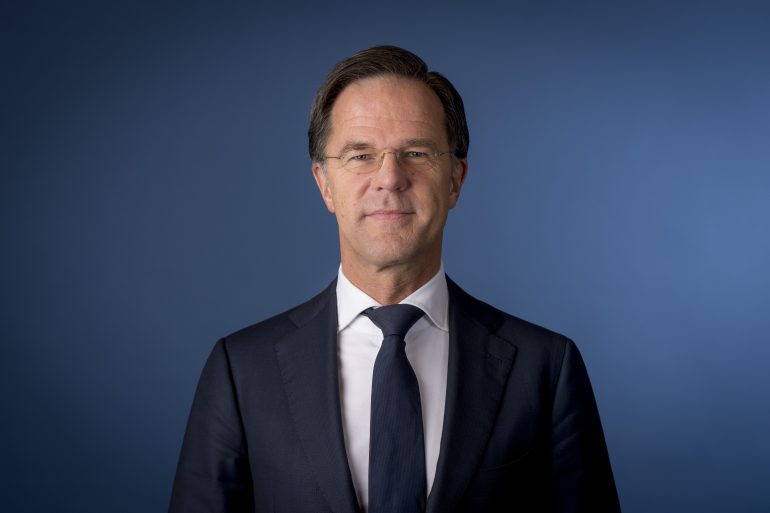Mark Rutte, the longest-serving Prime Minister in Dutch history, announced his decision to quit as VVD leader and leave politics after of the upcoming general election, held in November. His heritage will be large, as shown by this brief overview of his career.
Entering Parliament, straight to the second tier: 2002 – 2006
Rutte stood for the VVD party in the 2002 general election. While the party was reduced from 38 to 24 seats in the House of Representatives, VVD went onto form a coalition with the CDA during the three Cabinets led by Jan Peter Balkenende. Rutte held two positions during his stint in government: Secretary of State (i.e. deputy minister) for Social Affairs and Employment, and later Education, Culture and Science secretary. While Employment secretary, Rutte courted controversy with his decision to investigate people from a Somali background for social security fraud, which a Haarlem court judged to be ‘[discriminatory] on the basis of race’.
VVD leader: 2006 – 2010
Following a poor showing at the 2006 municipal elections, in which the VVD lost 128 seats, Jozias van Aartsen resigned as party leader. In a three-way race, Rutte won convincingly with 51.5% of the vote. In his victory speech, he suggested he wanted to broaden the party’s voter coalition by appealing to working-class voters to make the VVD a party for everyone and ‘not just for the elite.’ Rutte faced his first major test as leader that same year, as he contested the 2006 general election following the collapse of second and third Balkenende cabinets. The results were disappointing, as Rutte failed to connect with the public and the party lost six seats.
Rising above as others fall: 2010
After the breakdown of the fourth Balkenende cabinet, general elections took place in June 2010. While the VVD improved on its 2006 result, it was only a modest win, as they gained nine seats. However, the party was helped enormously by the collapse of the support for the CDA and Socialist Party, who lost 30 seats between them. Rutte, with support from the fallen CDA, and backing from Geert Wilders’ right-wing PPV, was able to form his first cabinet and be elected the second youngest Prime Minister in Dutch history.
The Prime Minister is dead, long live The Prime Minister: 2010 – 2012
Despite his first cabinet only lasting two years, Rutte was able to implement considerable government structural reform. In line with the VVD’s liberal ideology, Rutte reduced the size of the government ministries considerably, merging several together. His government couldn’t last, though. In order to implement EU regulations, Rutte announced plans to cut 14 billion in government spending. Wilders rejected these proposals and withdrew his party’s support, leading to the coalition collapsing and new elections being called.
Second bite at the cherry: 2012 – 2017
After a fantastic result in the 2012 election, the VVD entered into a coalition with PvdA to form the longest-serving government in Dutch post-war history. This period in Dutch history was defined by the Malaysia Airlines flight 17 tragedy, in which a flight from Schiphol to Kuala Lumpur was shot down by a ground-to-air missile controlled by the Russian Federation.
Third time’s a charm: 2017 – 2021
Rutte called a general election in March 2017 and, while the VVD lost eight seats, their coalition partners PvdA lost an astonishing 29 seats. The VVD formed a new cabinet with a rainbow coalition of CU, D66 and CDA. Given the right-ward slant of this political composition, there was an inevitable focus on economic issues such as major tax reform. This included an attempt to abolish the 15% dividend tax on corporations, which failed after public outcry. Rutte’s third term as Prime Minister will ultimately be remembered for two things: Covid-19 and the childcare benefits scandal.
The end: 2021 – 2023
After resigning his cabinet due to the political fallout of the benefits scandal, Rutte once again earned his ‘Teflon’ moniker by winning the most seats in Parliament for the fourth election in a row. After a tortuously long negotiating process, a cabinet was finally formed in January 2022 – the elections had been held in March 2021. These two years were a period of severe crisis for the Netherlands: recovery after the pandemic was essential, but so were many other issues, such as the shortage of housing, the nitrogen reduction plans and resulting farmers’ protests, a scandal after it was revealed Rutte had been deleting official communications from his phone, and finally the one that ended his Premiership – the controversial proposed asylum policy. This ultimately led to the CU and D66 withdrawing their support for the government and the calling of elections for November. And that, as they say, was the end for ‘Teflon’ Mark Rutte.
Written by James Turrell
